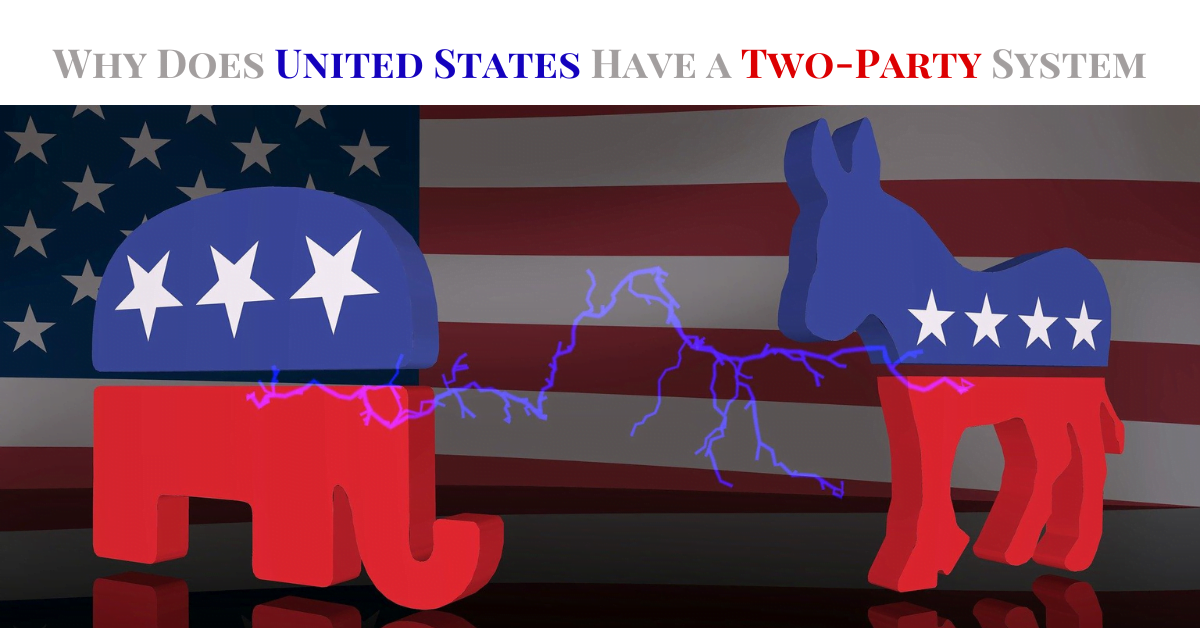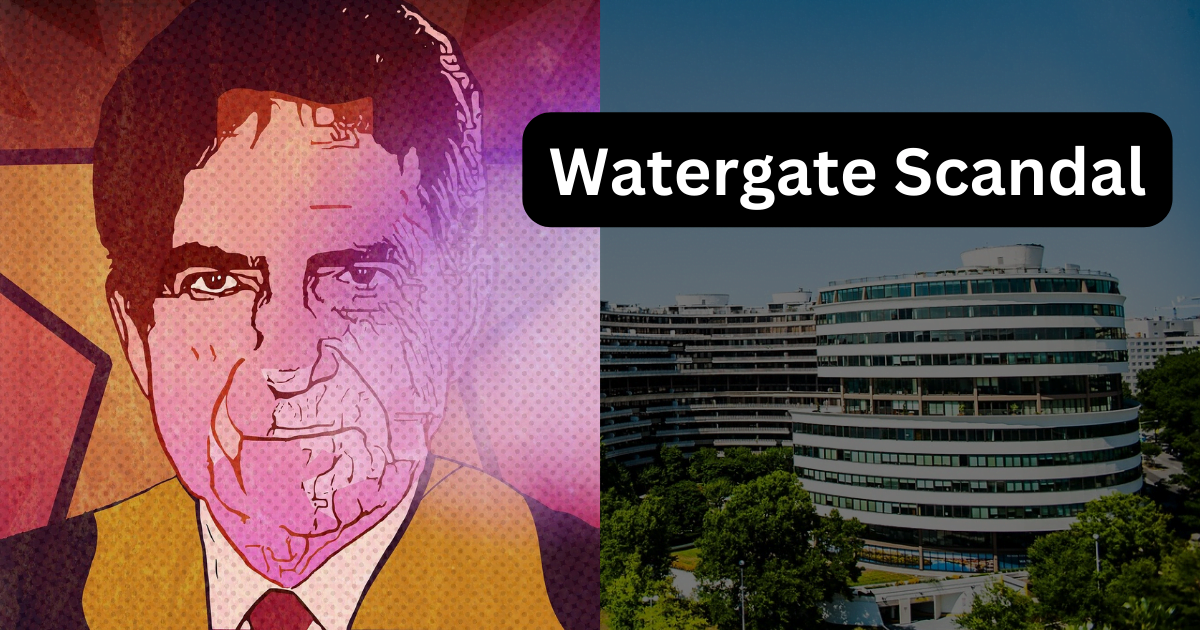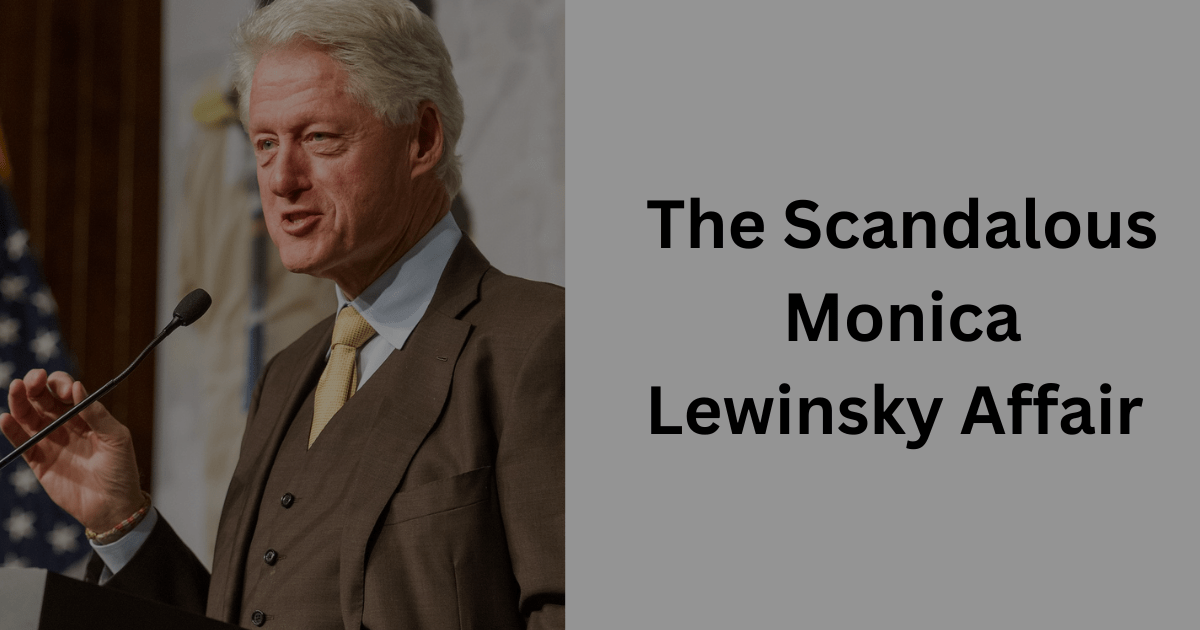The Teapot Dome Scandal
In the annals of American history, few political scandals have left an indelible mark like the Teapot Dome Scandal. Delving into the depths of corruption and power play, this article aims to provide a comprehensive overview of the scandal, shedding light on the intricacies that captivated the nation during the early 1920s.
Background: Teapot Dome Scandal

The early 20th century was a time of transition and upheaval, with the world recovering from the aftermath of World War I. Against this backdrop, the United States found itself embroiled in a scandal that would rock the very foundations of its political landscape.
The Political Landscape of the 1920s
Embed from Getty ImagesIn the aftermath of World War I, the United States found itself navigating a complex era marked by economic prosperity, cultural shifts, and political realignments. The 1920s, often referred to as the “Roaring Twenties,” witnessed unprecedented industrial growth and a surge in consumerism. This period also saw a shift in political dynamics, with a conservative wave gripping the nation.
President Warren G. Harding’s Administration
At the helm of this transformative period was President Warren G. Harding, whose administration sought to usher in an era of normalcy after the turmoil of the war. Harding, known for his affable demeanor, aimed to stabilize the country and promote business interests.
The Importance of Oil
Oil emerged as a pivotal resource during this time, fueling the nation’s economic engine and playing a crucial role in geopolitical strategies. The U.S. Navy, recognizing the strategic significance of oil reserves, particularly the Teapot Dome in Wyoming, sought to secure a reliable supply for its fleet.
Rise of Oil Magnates
Simultaneously, a cadre of powerful oil magnates, driven by ambition and the promise of immense profits, sought to extend their influence over these coveted reserves. The convergence of political power and corporate interests set the stage for the Teapot Dome Scandal.
Key Players in Teapot Dome Scandal
Albert B. Fall
Embed from Getty ImagesAlbert B. Fall emerged as a central figure in the Teapot Dome Scandal, holding the pivotal position of Secretary of the Interior in President Warren G. Harding’s administration. Fall, with a political career marked by charisma and influence, played a significant role in the unfolding drama. His enigmatic persona, combined with close ties to the oil industry, set the stage for the scandal’s intricate narrative.
Fall’s political acumen and extensive connections within both political and corporate circles made him a formidable force. As Secretary of the Interior, he wielded considerable power over the nation’s natural resources, including the coveted Teapot Dome reserves.
Behind the veneer of public service, Fall orchestrated a series of backdoor deals with powerful oil magnates. These clandestine agreements, driven by personal gain, involved granting exclusive rights to exploit the Teapot Dome reserves in exchange for substantial bribes.
Oil Tycoons and Corporate Machinations
Embed from Getty ImagesEdward L. Doheny
Foremost among the oil magnates embroiled in the scandal was Edward L. Doheny, a prominent figure in the American oil industry. Doheny’s vast wealth and influence extended into political spheres, positioning him as a key player in the Teapot Dome drama.
Doheny’s ability to influence government officials, including Albert B. Fall, became a critical factor in the unfolding scandal. His oil empire sought to secure advantageous deals, leveraging political connections to gain unprecedented access to the Teapot Dome reserves.
Harry F. Sinclair
Another influential character in the scandal was Harry F. Sinclair, a wealthy oil magnate with a penchant for strategic business maneuvering. Sinclair’s corporation, Mammoth Oil, sought to expand its influence by securing control over the Teapot Dome reserves.
Sinclair’s corporate intrigue played a crucial role in the scandal, as Mammoth Oil engaged in covert dealings with Fall to ensure preferential treatment. The intertwining interests of Doheny and Sinclair added layers of complexity to the scandal’s narrative.
Unveiling The Teapot Dome Scandal
Embed from Getty ImagesTeapot Dome Reserves
The saga of the Teapot Dome Scandal begins with the scenic landscape of Wyoming, where the Teapot Dome naval oil reserves gained prominence. Designated as a strategic asset for the U.S. Navy, these reserves held not only vast oil wealth but also the key to national security in the post-World War I era.
The Teapot Dome reserves were not merely a repository of natural resources but a linchpin in the naval strategy of the United States. As the U.S. Navy transitioned from coal to oil for its fleet, securing a stable and controlled oil supply became paramount to maintaining the nation’s maritime capabilities.
The stakes were high, both economically and militarily, as the reserves represented a lifeline for the U.S. Navy’s expansion and modernization efforts. This heightened the allure of Teapot Dome, making it a focal point for ambitious oil magnates and, unfortunately, a breeding ground for corruption.
Bribery and Corruption
Embed from Getty ImagesThe unveiling of the Teapot Dome Scandal exposed the underhanded dealings of Secretary of the Interior, Albert B. Fall. Once a trusted member of President Harding’s cabinet, Fall’s actions would tarnish not only his own legacy but also the reputation of the entire administration.
Fall orchestrated a series of backdoor agreements with powerful oil magnates, primarily Edward L. Doheny and Harry F. Sinclair. In exchange for substantial bribes, Fall granted these oil tycoons exclusive rights to exploit the Teapot Dome reserves, betraying the public trust and compromising national interests for personal gain.
Secrecy and Betrayal
The unfolding scandal revealed a world of secrecy and betrayal, where government officials and corporate moguls conspired behind closed doors. The clandestine nature of these deals underscored the lengths to which individuals in positions of power were willing to go to further their interests.
As the details of the scandal became public, the nation witnessed the erosion of trust in its government. The betrayal of public trust by those sworn to protect national interests shook the foundations of democracy, prompting citizens to question the integrity of their elected officials.
Fallout and Public Outcry
Congressional Inquiries
The revelation of the Teapot Dome Scandal ignited a firestorm of public outcry, prompting swift action from Congress. The halls of Capitol Hill became the stage for extensive hearings, where key players were called to testify, and the intricate details of corruption were dissected for the nation to witness.
These hearings were not just routine investigations; they evolved into a political theater that captivated the American public. Citizens tuned in with bated breath as whistleblowers, experts, and key figures provided damning evidence, exposing the depth of corruption that had infiltrated the highest echelons of government.
Demands for Accountability
As details of backdoor deals and bribery emerged, citizens across the nation were gripped by a sense of betrayal. The very officials entrusted with safeguarding national interests were revealed to be prioritizing personal gain. This realization fueled an outpouring of anger and frustration among the American populace.
The Teapot Dome Scandal acted as a catalyst for grassroots movements demanding accountability. Advocacy groups, civic organizations, and concerned citizens rallied together, calling for decisive action against those responsible. The public, no longer content with passive observance, became active participants in the pursuit of justice.
Political Repercussions
The fallout from the scandal reached the highest levels of government, casting a shadow over President Warren G. Harding’s administration. The once-prominent beacon of normalcy now faced intense scrutiny and criticism as key officials, including Secretary Albert B. Fall, came under the spotlight.
The Teapot Dome Scandal dealt a severe blow to the public’s trust in governmental institutions. The erosion of this trust extended beyond individual actors, becoming a systemic issue that called into question the very foundations of democracy. Skepticism replaced blind faith in those elected to serve the nation.
Legal Ramifications
Albert B. Fall’s Conviction
Embed from Getty ImagesThe legal aftermath of the Teapot Dome Scandal was characterized by a landmark event: the conviction of Albert B. Fall, the Secretary of the Interior. Fall’s fall from grace marked a historic precedent as he became the first sitting Cabinet member to be convicted of a felony.
Fall’s conviction served as a symbol of justice prevailing over corruption. It sent a resounding message that even individuals holding the highest positions of power would be held accountable for their actions. This symbolic victory was crucial in restoring public faith in the rule of law.
The legal proceedings against Fall were meticulous, exposing the intricacies of his illicit dealings with oil magnates. The courtroom became a battleground where the prosecution laid bare the evidence of bribery and corruption, leading to a guilty verdict that reverberated through the political landscape.
Impact on Political Landscape
Fall’s conviction had a profound impact on public perception. It shattered the perception of impunity enjoyed by those in positions of power, demonstrating that even government officials were subject to the same legal scrutiny as any other citizen. The legal reckoning became a cornerstone in reshaping the relationship between citizens and their elected representatives.
The legal ramifications of the Teapot Dome Scandal eroded the sense of immunity that had long shielded the political elite from consequences. This shift marked a departure from a culture where influential figures often evaded legal consequences, signaling a new era of accountability in American politics.
Legislative Changes and Reforms
In the wake of the scandal, the legal system underwent reforms to prevent future abuses of power. Stricter government oversight mechanisms were implemented to ensure transparency and accountability in the dealings between public officials and private interests.
Legislative changes aimed at curbing corruption became a lasting legacy of the Teapot Dome Scandal. The incident prompted a reevaluation of existing safeguards, leading to the introduction of anti-corruption measures designed to protect the integrity of governmental operations.
Restoring Public Trust
The legal proceedings and subsequent conviction of Albert B. Fall were not only punitive but also symbolic in the quest for transparency. The public, disillusioned by the scandal, found solace in witnessing a powerful figure being held to account. This symbolic victory went a long way in restoring faith in the principles of justice and fairness.
The legal ramifications of the Teapot Dome Scandal demonstrated that everyone, regardless of their position or influence, was subject to the same legal standards. The conviction of a high-ranking official emphasized the principle of equality before the law, reinforcing the idea that no one was above the rules that governed society.
Lessons Learned and Lasting Legacy
The legal ramifications of the Teapot Dome Scandal transformed the incident from a mere political scandal into a cautionary tale for future generations. The legal consequences served as a deterrent, reminding those in power of the potential repercussions of unethical and corrupt behavior.
Ultimately, the legal fallout from the Teapot Dome Scandal played a pivotal role in upholding democratic values. It showcased the resilience of the legal system to rectify wrongs, fostering a sense of accountability that became an integral part of the ongoing narrative of American governance.
Also Read:
The Scandalous Iran-Contra Affair
The Monica Lewinsky Scandal
Conclusion
In conclusion, the Teapot Dome Scandal stands as a testament to the fragility of power and the importance of holding those in authority accountable for their actions. The intricate web of corruption and its subsequent unraveling showcased the resilience of a democratic system determined to confront and rectify its flaws.




